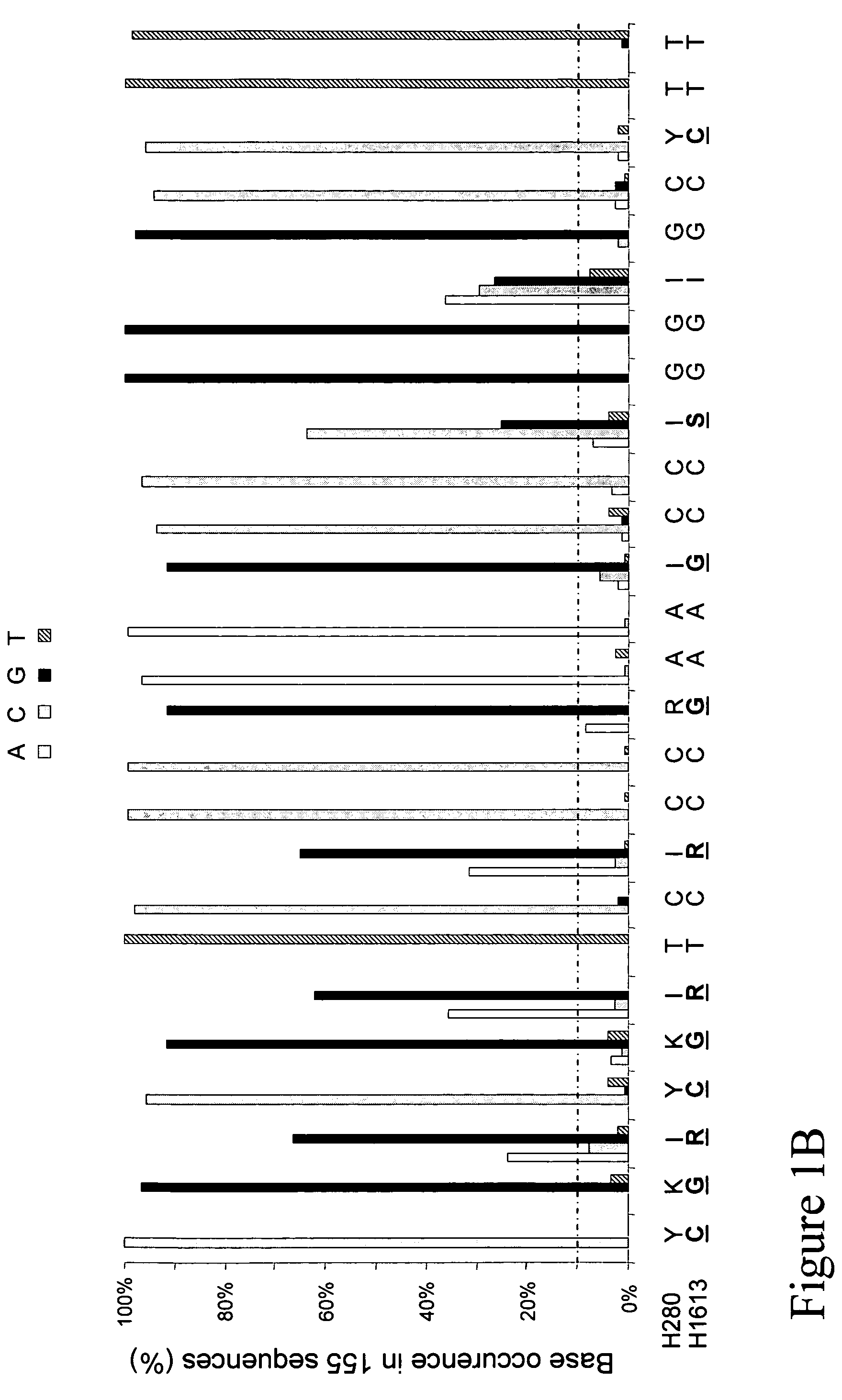Strong PCR primers and primer cocktails
a technology of pcr and primers, applied in the field of strong pcr primers and primer cocktails, can solve the problems of incomplete account of failure to detect these sequences in the library, under-representation of high g+c organisms in the pcr product library, and inability to culture complex communities. to achieve the effect of efficient amplifying of high g+c templates
- Summary
- Abstract
- Description
- Claims
- Application Information
AI Technical Summary
Benefits of technology
Problems solved by technology
Method used
Image
Examples
Embodiment Construction
[0015]As used herein, “purified” does not require absolute purity but is instead intended as a relative definition. For example, purification of starting material or natural material to at least one order of magnitude, preferably two or three orders of magnitude is expressly contemplated as falling within the definition of “purified”.
[0016]As used herein, the term “isolated” requires that the material be removed from its original environment.
[0017]Described herein is a primer pair for amplification of cpn60 targets having high G+C content comprising: a first primer comprising a nucleotide sequence as set forth in SEQ ID NO. 1; and a second primer comprising a nucleotide sequence as set forth in SEQ ID NO. 2. In other embodiments, the first primer may consist essentially of a nucleotide sequence as set forth in SEQ ID NO. 1; and the second primer may consist essentially of a nucleotide sequence as set forth in SEQ ID NO. 2. In yet other embodiments, the first primer may consist of a ...
PUM
| Property | Measurement | Unit |
|---|---|---|
| temperature | aaaaa | aaaaa |
| temperatures | aaaaa | aaaaa |
| temperatures | aaaaa | aaaaa |
Abstract
Description
Claims
Application Information
 Login to View More
Login to View More - R&D
- Intellectual Property
- Life Sciences
- Materials
- Tech Scout
- Unparalleled Data Quality
- Higher Quality Content
- 60% Fewer Hallucinations
Browse by: Latest US Patents, China's latest patents, Technical Efficacy Thesaurus, Application Domain, Technology Topic, Popular Technical Reports.
© 2025 PatSnap. All rights reserved.Legal|Privacy policy|Modern Slavery Act Transparency Statement|Sitemap|About US| Contact US: help@patsnap.com



